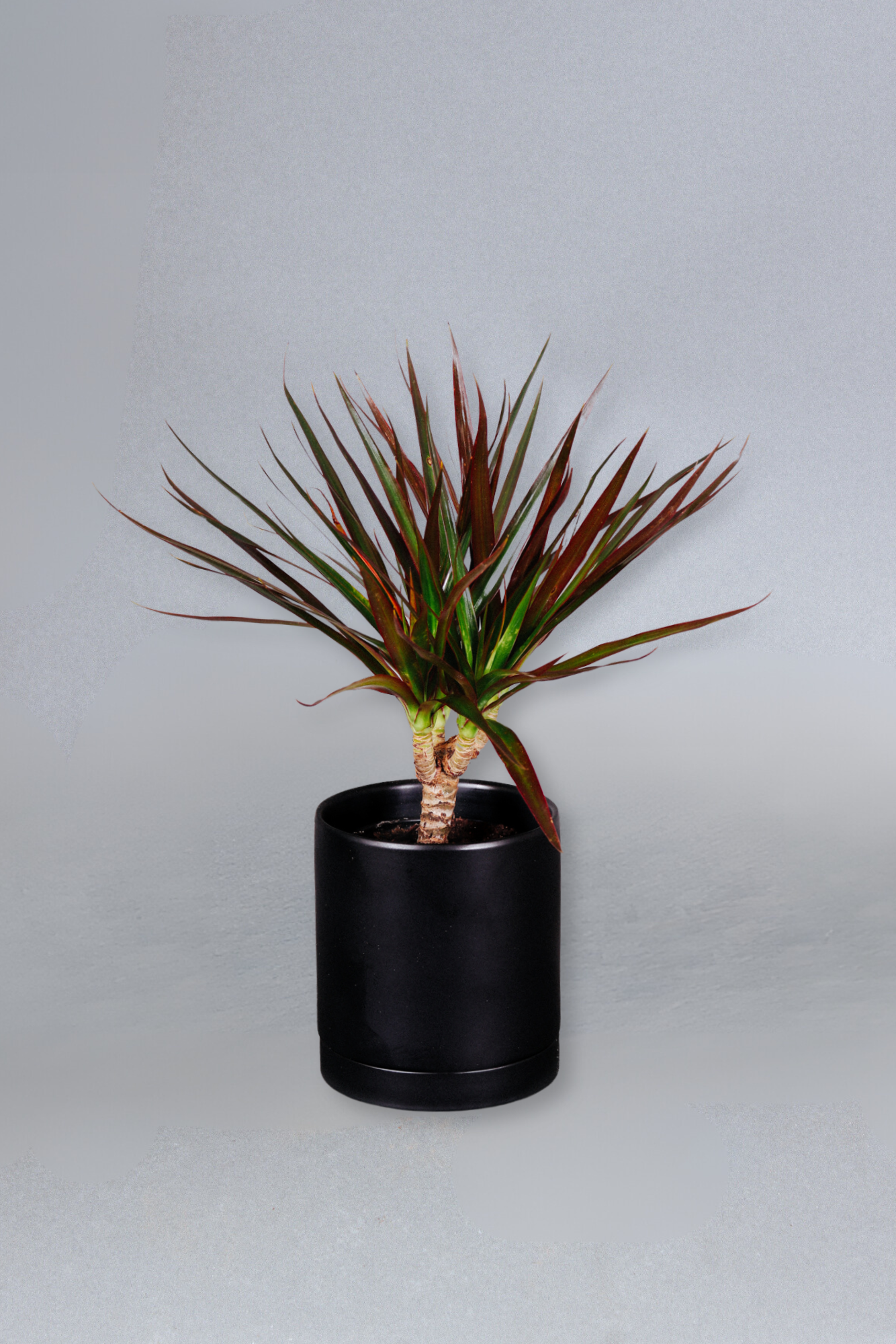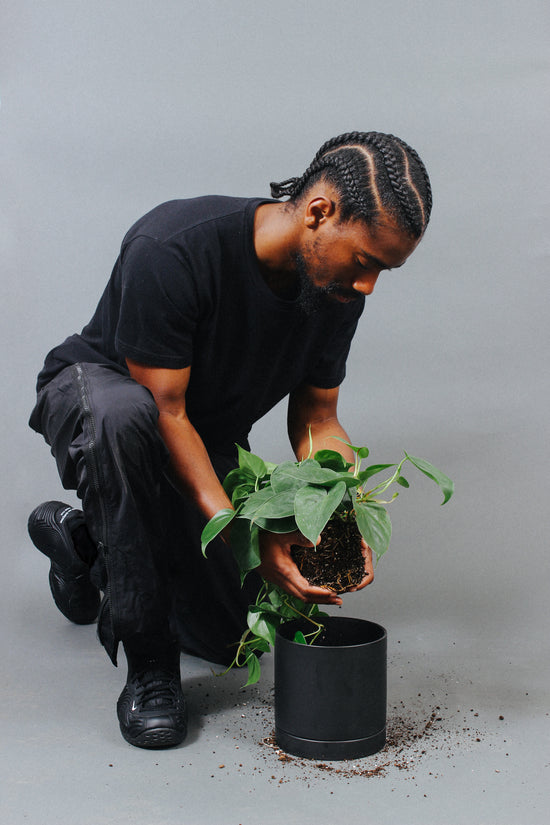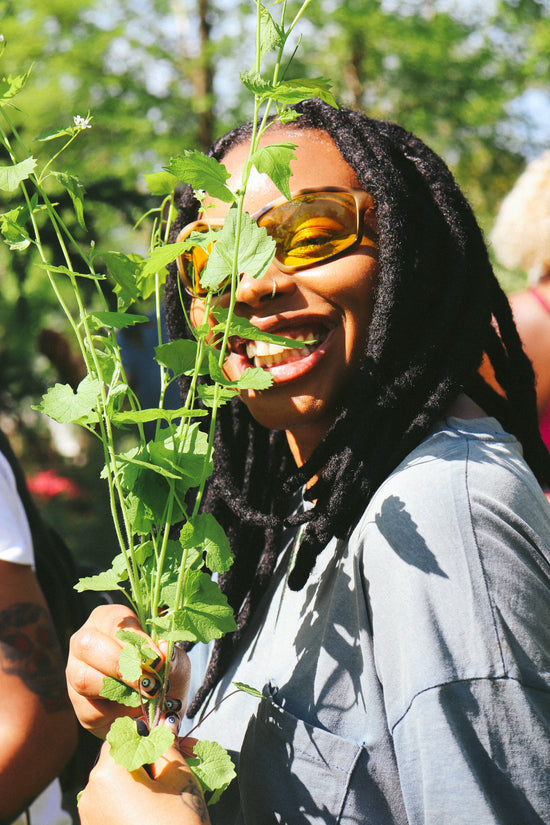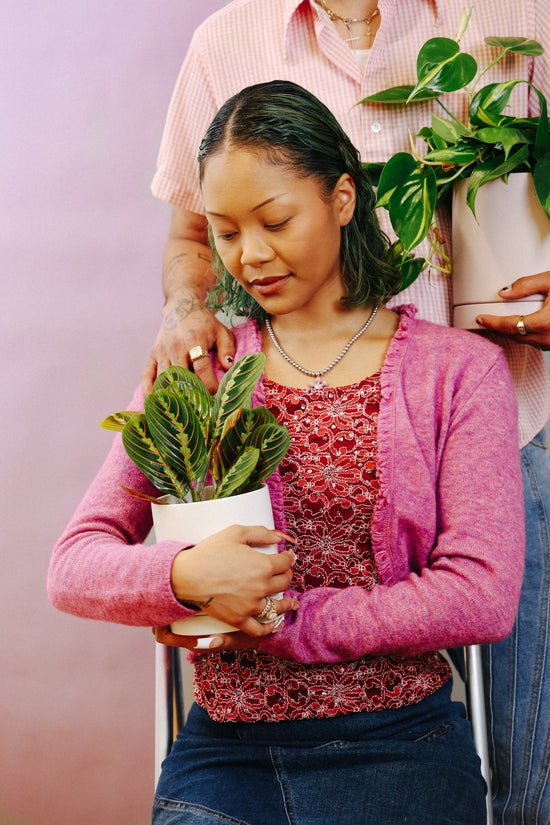Pests on our indoor houseplants can come as an unwanted surprise. They feed on plant stems, leaves, and soil nutrients, eventually causing damage or irreparable harm if not treated in time. They’re usually hard to spot and can multiply quickly, which means the best prevention method is to check your plants regularly and ensure all of their needs are being met.
Signs of Pests
If your plant is showing signs of stress without many changes in care, it may be dealing with a pest infestation. Some common symptoms are:
- Wilted or distorted leaves
- Stunted growth
- Spotted or discolored leaves
- Leaves drying out
- Sticky residue
What Causes Pests?
Pests reproduce and spread across plants quickly. After identifying which plants are affected, you can better determine what caused the infestation and how to prevent it in the future. Some common causes of pest infestations are:
- Bringing a new plant home that is already carrying pests
- Entry through air currents and drafts
- Laid eggs that become active in Spring
- Wet soil
- Dry or humid air
Types of Pests
Indoor plants may need close examination of the underside of leaves, stem crevices, and soil to identify what kind of pest is affecting them. They commonly favor already-stressed plants and young, new growth. Here’s a glance at the evidence of a pest infestation:
|
Aphids |

|
|
Fungus Gnats |

|
|
Mealybugs |

|
|
Scales |

|
|
Spider Mites |

|
|
Thrips |

|
|
Whiteflies |

|
Treatments
Whether homemade or commercially bought, these are a few of our tried and true insecticides to treat plant pests:
Basic DIY Insecticide: Water + 1-2 drops of liquid soap, such as Dr. Bronners.
Neem Oil: Water + 1-2 drops of pure Neem Oil + 1-2 drops of liquid soap
Hydrogen Peroxide: 1 Part 3% Hydrogen Peroxide + 2 Parts Water
Rubbing Alcohol: 1 Part 70% Isopropyl Alcohol + 9 Parts Water *spot test first
Pepper Spray: Red, Black, or Chili Pepper + Liquid Soap + Water
Mosquito Bits, Diatomaceous Earth, and Lady Bugs can also be used to naturally kill off existing pests and larvae. Note that once diluted, many treatment solutions are not shelf-stable and should be discarded after use.
Steps to Treat Pest Infestations
Still not sure how to treat your pest problem? We offer free Office Hour plant consultations to Grounded customers. We’re happy to personally support you on your plant care journey!








